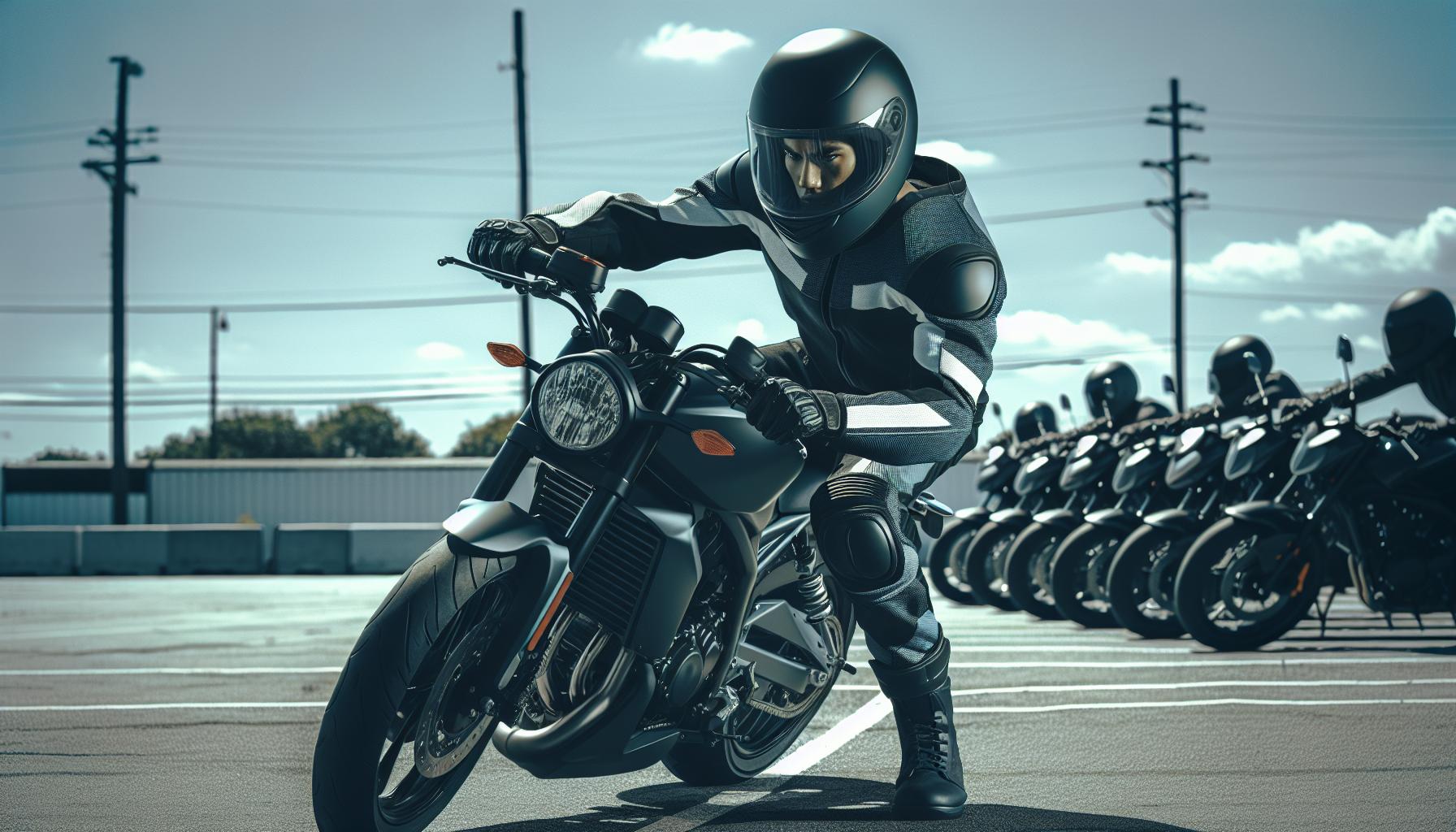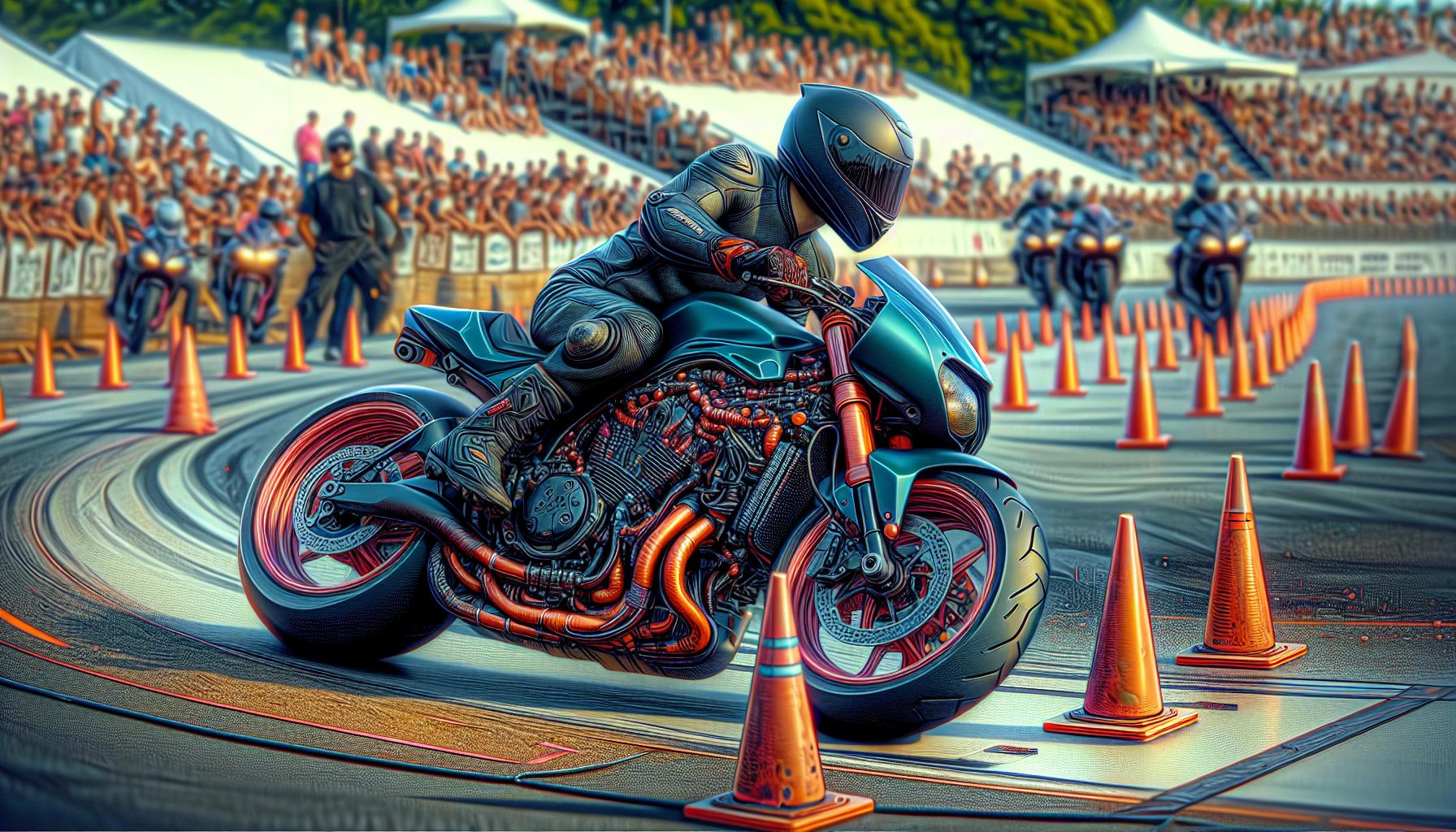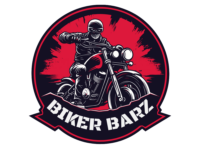Getting ready to conquer Ohio’s motorcycle test? It’s more than just proving you can balance on two wheels without tipping over! The Buckeye State takes motorcycle safety seriously and requires all aspiring riders to demonstrate their knowledge and skills before hitting the open road.
Whether you’re dreaming of cruising through the rolling hills of Hocking or zipping along Lake Erie’s shoreline the Ohio motorcycle test stands between you and your two-wheeled freedom. From mastering the intricate dance of clutch control to memorizing traffic laws that’ll keep you rubber-side down this test ensures every new rider has the chops to handle their machine safely and confidently.
Ohio Motorcycle Test
The Ohio Bureau of Motor Vehicles (BMV) established specific requirements for motorcycle license endorsements. These regulations ensure riders possess the necessary skills to operate motorcycles safely on Ohio roads.
Ohio sets age-based requirements for motorcycle license applicants. Riders age 16-17 must complete a motorcycle safety course from a state-approved provider. Applicants under 18 need parental consent through a notarized form. The state requires all new riders to hold a valid Ohio driver’s license before applying for a motorcycle endorsement. Temporary instruction permits last 6 months with restrictions including no night riding hours of 6 PM to 6 AM, no passengers, mandatory helmet use, no interstate highway riding.
Types of Motorcycle Endorsements
The Ohio BMV offers three distinct motorcycle endorsements. Endorsement 3 covers two-wheeled motorcycles. Endorsement 4 applies to three-wheeled motorcycles. Endorsement 5 combines both two-wheeled and three-wheeled motorcycle operation privileges. Each endorsement requires separate testing requirements:
- M3: Standard motorcycle endorsement with full testing
- M4: Three-wheel motorcycle testing only
- M5: Combined testing for both vehicle types
The testing process includes knowledge assessment vehicle inspection skills roadway operation. Riders must pass both written and practical tests for their specific endorsement type.
Motorcycle Temporary Instruction Permit (TIPIC)

The Motorcycle Temporary Instruction Permit Identification Card (TIPIC) enables new riders to practice operating a motorcycle under specific conditions. This permit remains valid for 1 year from the date of issuance.
Required Documentation
To obtain a TIPIC, applicants must bring:
- Valid Ohio driver’s license
- Birth certificate or passport
- Social Security card
- Two documents proving Ohio residency (utility bills or bank statements)
- Payment for applicable fees ($27.75 as of 2023)
- Proof of completion for a state-approved motorcycle safety course (for riders under 18)
- Written parental consent form (for applicants under 18)
Testing Process
The TIPIC testing process involves:
- Passing a motorcycle knowledge test with 40 multiple-choice questions
- Achieving a minimum score of 75% to pass
- Completing a vision screening
- Providing a clear photo for the permit
Testing locations operate on specific schedules:
| Day | Hours |
|---|---|
| Monday-Friday | 8:00 AM – 5:00 PM |
| Saturday | 8:00 AM – 2:00 PM |
| Sunday | Closed |
Applicants receive test results immediately after completion. Those who don’t pass wait 24 hours before retaking the test.
Ohio Motorcycle Knowledge Test

The Ohio motorcycle knowledge test evaluates a rider’s understanding of motorcycle operation safety rules. This computer-based assessment contains 40 multiple-choice questions requiring a minimum score of 75% to pass.
Study Materials and Resources
The Ohio BMV offers comprehensive study materials for motorcycle knowledge test preparation. The Ohio Motorcycle Operator Manual contains essential information about traffic laws vehicle operation procedures safety guidelines. Riders access free practice tests through the BMV website to familiarize themselves with question formats test topics. The BMV partners with approved training centers providing additional resources including interactive learning modules video demonstrations. Local libraries maintain copies of motorcycle manuals study guides in print digital formats.
Common Test Topics
The knowledge test covers five primary categories of motorcycle operation:
- Basic vehicle control techniques including starting stopping turning
- Traffic laws specific to motorcycle operation on Ohio roads
- Safety equipment requirements for both riders passengers
- Lane positioning strategies roadway navigation procedures
- Emergency maneuvers crash avoidance techniques
Each question assesses understanding of:
- Right-of-way rules at intersections traffic signals
- Required protective gear specifications helmet laws
- Weather condition adaptations night riding procedures
- Proper brake application techniques cornering methods
- Group riding protocols passenger safety requirements
The test emphasizes real-world scenarios motorcycle riders encounter on Ohio roads focusing on practical application of safety rules regulations.
On-Cycle Skills Test Components

The Ohio motorcycle skills test evaluates riders’ ability to control their motorcycles safely in real-world conditions. Testing stations feature specific course layouts designed to assess essential riding competencies through standardized exercises.
Basic Control Skills
The on-cycle test measures five fundamental control abilities through structured exercises. Riders demonstrate proper clutch control when starting from a stop position. Shifting gears smoothly through acceleration requires precise throttle management at speeds up to 15 mph. The test includes controlled braking exercises to stop within designated zones. Proper turning techniques involve maintaining steady speeds through curves while staying within marked boundaries. Balance control assessment occurs during low-speed maneuvers such as figure eights around cones.
Traffic Safety Requirements
The traffic safety portion examines riders’ road awareness abilities in controlled environments. Proper signaling techniques demonstrate communication with other road users during lane changes. Maintaining appropriate following distances shows spatial judgment at various speeds. Head checks verify scanning patterns when changing positions. Lane positioning exercises assess riders’ ability to see hazards while remaining visible to others. Emergency stopping procedures evaluate reaction times from speeds of 12-18 mph while maintaining vehicle control.
Preparing for Your Ohio Motorcycle Test
Effective preparation for the Ohio motorcycle test combines structured training courses with dedicated practice sessions. Success in both written and practical components requires a systematic approach to learning and skill development.
Recommended Training Courses
The Ohio Bureau of Motor Vehicles partners with Motorcycle Ohio to offer three essential training courses:
- Basic Rider Course (BRC): A 16-hour program covering fundamental riding skills through classroom instruction and hands-on practice
- Basic Rider Course for Returning Riders (BRC-RR): An 8-hour refresher course for experienced riders who want to update their skills
- Three-Wheel Basic Rider Course (3WBRC): A specialized 12-hour program for riders interested in three-wheeled motorcycles
Course fees range from $50 to $150, with classes available at 55 training sites across Ohio. Students receive a completion card that waives the on-cycle skills test requirement at the BMV.
Practice Tips and Strategies
Successful test preparation includes these proven strategies:
- Complete 50 practice questions daily using the Ohio BMV online practice tests
- Study the Motorcycle Operator Manual chapters in 30-minute segments
- Practice basic maneuvers in empty parking lots for 2 hours weekly
- Master slow-speed control exercises at speeds below 15 mph
- Perform emergency braking drills from 20 mph in a controlled environment
- Practice figure-eight patterns to improve turning control
- Execute proper head turns at stops by checking left-right-left
These techniques focus on building muscle memory for the skills test while reinforcing knowledge test concepts.
Testing Locations and Scheduling
Ohio motorcycle tests take place at authorized BMV testing locations throughout the state. Riders select their preferred testing site based on proximity and schedule availability.
BMV Testing Sites
The Ohio Bureau of Motor Vehicles operates 55 driver examination stations across the state. These stations conduct motorcycle knowledge tests during standard business hours from Monday through Friday, 8 AM to 5 PM. Riders schedule their tests through the BMV’s online portal or by calling the examination station directly. Each location features dedicated testing areas for motorcycle skills evaluations, including marked courses for basic maneuvers. Popular testing sites include Columbus (Morse Road), Cleveland (Superior Avenue) and Cincinnati (Red Bank Road).
Third-Party Testing Options
Motorcycle Ohio partners with certified training centers to provide alternative testing locations. These centers offer complete motorcycle training programs that include both classroom instruction and skills testing. Training centers like Motorcycle Safety Foundation (MSF) sites operate extended hours including weekends. The Ohio Department of Public Safety maintains partnerships with 20 approved third-party testing facilities across major metropolitan areas. Riders who complete training at these facilities receive test waivers valid for 60 days at any BMV location. Course completion certificates from approved providers eliminate the need for additional skills testing at BMV sites.
Getting a motorcycle license in Ohio requires dedication preparation and a commitment to safety. The comprehensive testing process ensures that riders possess both the knowledge and practical skills needed to navigate Ohio’s roads confidently.
By following the BMV’s guidelines completing required training courses and dedicating time to practice aspiring riders can successfully obtain their motorcycle endorsement. Through this structured approach Ohio maintains high safety standards while fostering a responsible motorcycle community.
Anyone looking to join Ohio’s motorcycling community should take advantage of the state’s excellent resources and training programs. These tools pave the way for a successful testing experience and a lifetime of safe riding enjoyment on Ohio’s diverse roadways.

